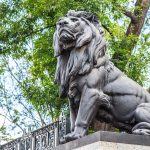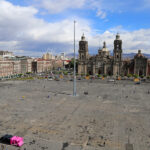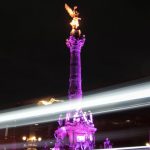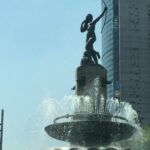

A main entrance to Chapultepec park, flanked by historic lions...

There's no center like the very center, and in Mexico City, that means el Zócalo!

Likely the most prominent symbol of Mexico City, El Ángel is always at the center of things...

One of Reforma's most striking "glorietas," the Diana is more than a copy of some Euro original. It's homegrown!

One of the most ephemeral of Reforma roundabouts, La Palma is likely to make any list of favorites.